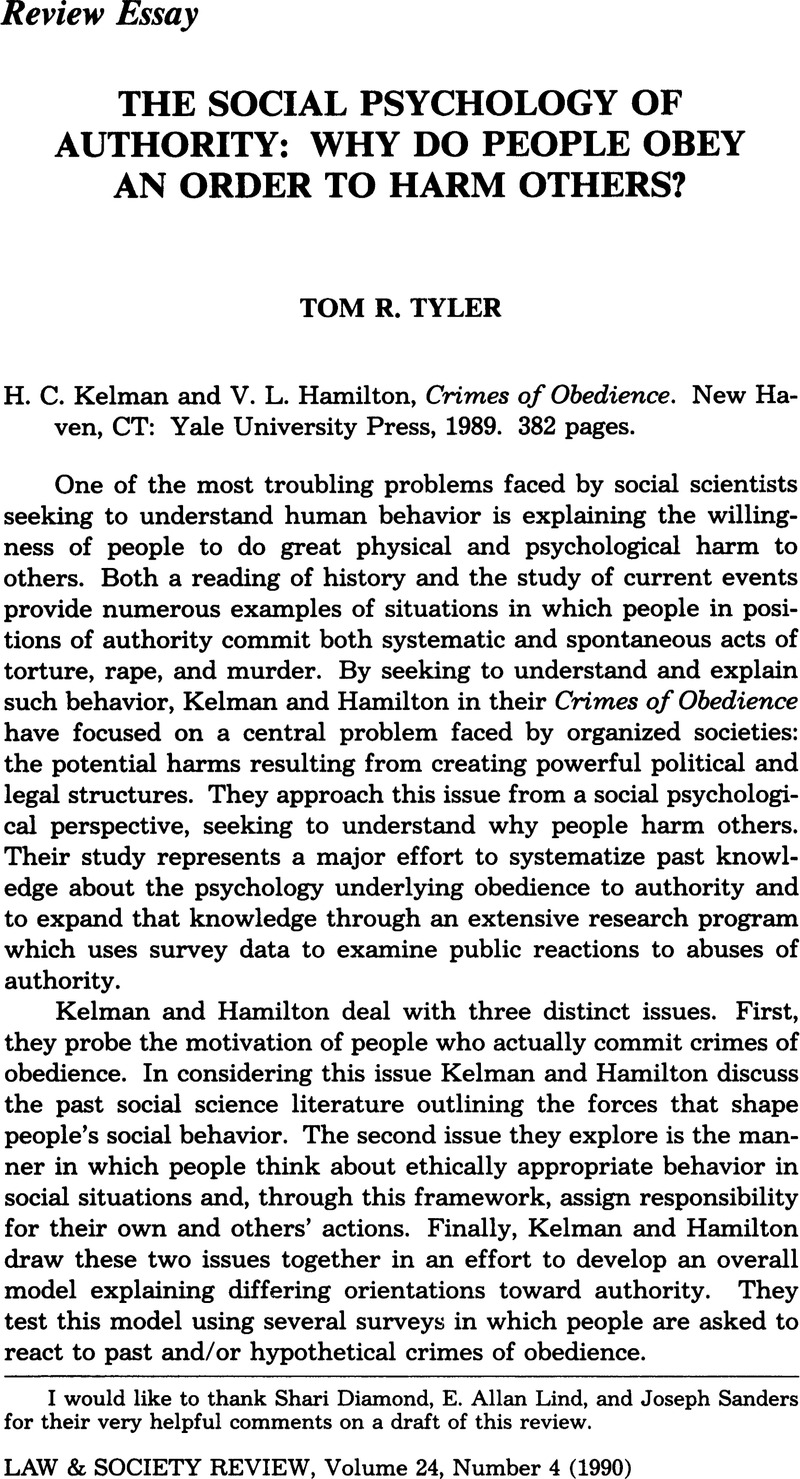Crossref Citations
This article has been cited by the following publications. This list is generated based on data provided by Crossref.
Kuperan, K.
and
Sutinen, Jon G.
1998.
Blue Water Crime: Deterrence, Legitimacy, and Compliance in Fisheries.
Law & Society Review,
Vol. 32,
Issue. 2,
p.
309.
Davison, R.M.
Martinsons, M.G.
Lo, H.W.H.
and
Kam, C.S.P.
2006.
Ethical values of IT professionals: evidence from Hong Kong.
IEEE Transactions on Engineering Management,
Vol. 53,
Issue. 1,
p.
48.
Ellermann, Antje
2010.
Undocumented Migrants and Resistance in the Liberal State.
Politics & Society,
Vol. 38,
Issue. 3,
p.
408.
Mbago, Musa
Ntayi, Joseph M.
and
Muhwezi, Moses
2016.
Compliance to acts, rules and regulations: Evidence from sub-saharan africa.
Journal of Public Procurement,
Vol. 16,
Issue. 3,
p.
374.
Roch, Christine H.
Elsayed, Mahmoud A. A.
and
Edwards, Jason
2018.
Students’ and Parents’ Perceptions of Disciplinary Policy: Does Symbolic Representation Matter?.
The American Review of Public Administration,
Vol. 48,
Issue. 4,
p.
329.
Roman, John K.
Yahner, Jennifer
and
Zweig, Janine
2020.
How do drug courts work?.
Journal of Experimental Criminology,
Vol. 16,
Issue. 1,
p.
1.
Fine, Adam D.
Padilla, Kathleen E
and
Tapp, Julie
2021.
Can working collaboratively with police on community service promote positive youth development?.
Police Practice and Research,
Vol. 22,
Issue. 7,
p.
1739.
Tipurić, Darko
2022.
The Enactment of Strategic Leadership.
p.
1.
Hartner-Tiefenthaler, Martina
Nienaber, Ann-Marie
and
Yanagida, Takuya
2023.
Occupation Matters! A Multilevel Analysis of Organizational Trust in Professional Bureaucracies in the Healthcare Sector.
Public Performance & Management Review,
Vol. 46,
Issue. 3,
p.
512.
Roy, Shubhangi
2024.
When Do People Obey Laws?.
p.
19.
Zaidi, Huda
and
O’Connor, Christopher D
2024.
Policing social media: Are procedural justice principles guiding Canadian police interactions online?.
International Journal of Police Science & Management,
Vol. 26,
Issue. 2,
p.
258.
Roy, Shubhangi
2024.
When Do People Obey Laws?.
p.
101.
Damato, Nikol
2024.
Evaluating factors influencing compliance with vessel regulations to minimize disturbances to endangered killer whales (Orcinus orca).
Marine Policy,
Vol. 161,
Issue. ,
p.
106036.





